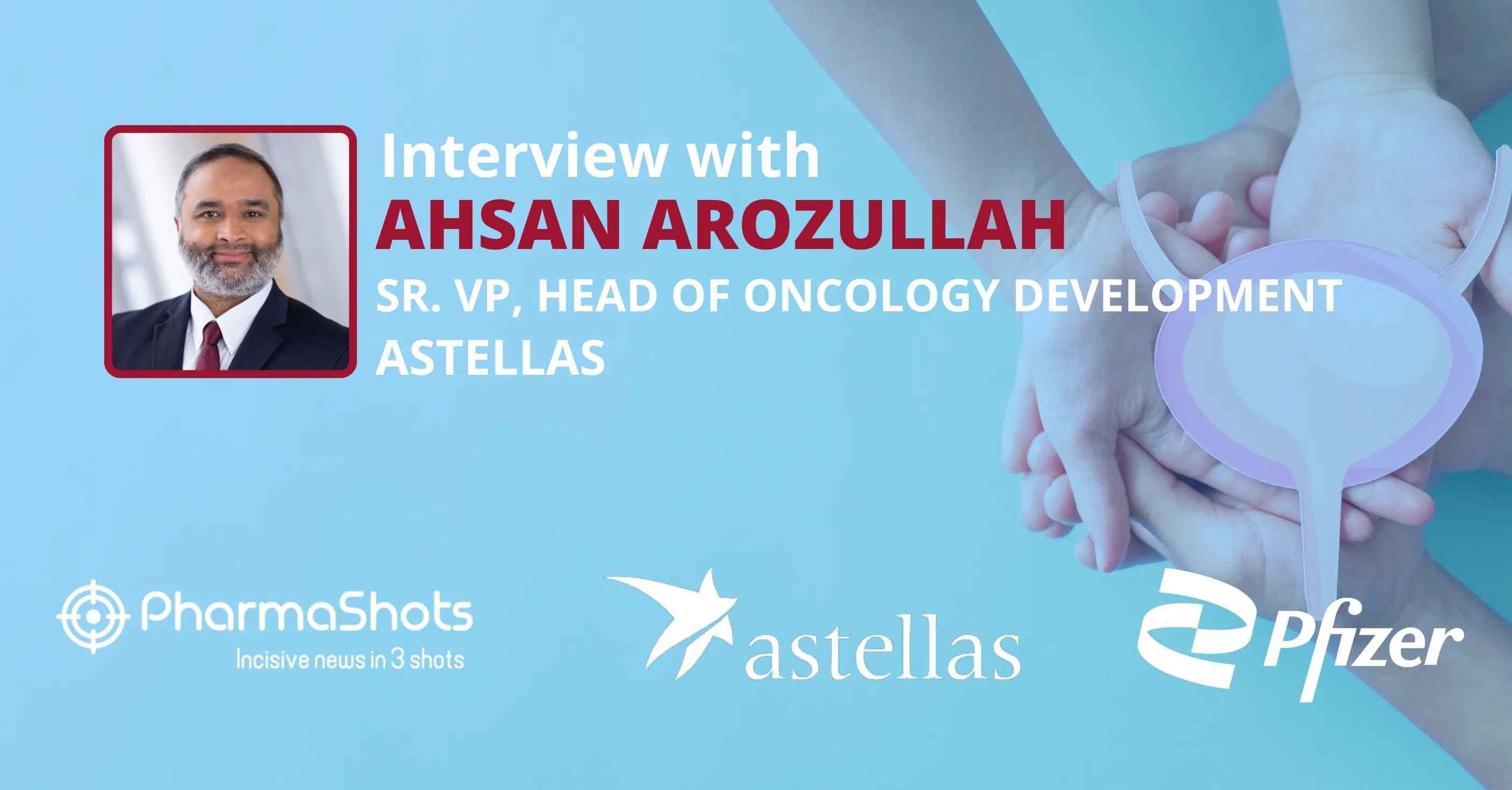
Avery Ince, VP, Medical Affairs - CVM Franchise, Janssen Shares his Views on New Data from P-III VOYAGER PAD Trial
Shots:
- Avery spoke about the study design and the new data obtained from the P-III VOYAGER PAD trial evaluating Xarelto + Aspirin to treat peripheral artery disease presented at the 72nd ACC 2023
- The data demonstrated that the treatment with the Xarelto vascular dose following LER had a 33% reduction in acute limb ischemia and a 15% reduction in major adverse limb and CV events, with or without DAPT
- The interview summarizes how Janssen is developing its lead product Xarelto in different combinations to boost its cardiovascular portfolio
Smriti: Would you please start by highlighting the details (MOA, ROA, formulations, etc.) of XARELTO®?
Avery Ince: XARELTO® was developed to help protect against thrombotic events and has been proven to be safe and effective across a variety of indications – non-valvular atrial fibrillation (NVAF), coronary artery disease (CAD), peripheral artery disease (PAD), deep vein thrombosis/pulmonary embolism (DVT/PE) initial and extended treatment, and venous thromboembolism (VTE) prophylaxis in acutely ill medical patients and after hip/knee replacement surgery. The medication has been broadly studied in both randomized clinical trials and real-world evidence studies and is available in four dose strengths – 2.5mg, 10mg, 15mg, and 20 mg. Administered orally, XARELTO® inhibits Factor Xa and via dual pathway inhibition (DPI) to target both thrombin generation and platelet activation.
Smriti: Shed some light on the study design of the P-III (VOYAGER PAD) clinical trial evaluating XARELTO® in combination with Aspirin in patients with peripheral artery disease.
Avery Ince: The Phase 3 VOYAGER PAD study included 6,564 patients from 534 sites across 34 countries worldwide. In the study, patients were randomized to receive either XARELTO® 2.5 mg twice daily plus aspirin 100 mg once daily or aspirin 100 mg once daily alone. The primary efficacy endpoint was a composite of myocardial infarction (MI), ischemic stroke, acute limb ischemia, major amputation of a vascular etiology, or cardiovascular death. The primary safety endpoint was major bleeding according to the Thrombolysis in Myocardial Infarction (TIMI) classification.
Smriti: Please give our readers some brief insights on the data obtained from the P-III (VOYAGER PAD) clinical trial evaluating XARELTO®?
Avery Ince: The VOYAGER PAD study met its primary efficacy and principal safety endpoints, demonstrating the XARELTO® vascular dose was superior to aspirin alone in reducing the risk of major adverse limb and cardiovascular events (composite outcome of acute limb ischemia, major amputation for vascular causes, myocardial infarction, ischemic stroke, or cardiovascular death) by 15 percent in patients with symptomatic PAD after lower-extremity revascularization. The benefit of adding XARELTO® to aspirin was apparent early, was consistent among major subgroups, and continued to accrue over time. There was no significant increase in TIMI major bleeding observed in patients treated with the XARELTO® plus aspirin compared to aspirin alone (Kaplan-Meier estimate at three years 2.65% vs. 1.87%, respectively).
Smriti: How has the presentation at the American College of Cardiology (ACC) annual meeting contributed to bringing XARELTO® to the attention of PAD sufferers?
Avery Ince: An analysis of the landmark Phase 3 VOYAGER PAD clinical trial presented at ACC.23 provides healthcare providers with further insights into the proven clinical utility of XARELTO® for people living with peripheral artery disease (PAD), particularly those who have undergone lower extremity (LER) revascularization. LER is a procedure that restores blood flow to the legs and patients who undergo LER are four times more likely to experience acute limb ischemia, which is often associated with long hospitalizations and high incidences of amputation, disability and death unless appropriate treatment is given.
These new data insights show that those treated with the XARELTO® vascular dose (2.5 mg twice daily plus aspirin 100 mg once daily) following LER had a 33 percent reduction in acute limb ischemia and 15 percent reduction in major adverse limb and cardiovascular events, with or without dual antiplatelet therapy (DAPT). These results were consistent at 30 days, 90 days and up to three years. Further, the data showed a trend toward greater efficacy with XARELTO® in the first 30 days, and XARELTO® plus aspirin proved more effective than antiplatelet therapy alone in preventing acute limb ischemia after LER. Ultimately, the results suggest that XARELTO® should be used as soon as possible after LER and be continued over time to help protect against serious complications such as acute limb ischemia or even amputation.
Smriti: What is the expected timeline in terms of filling and consecutive approval of XARELTO® for PAD patients?
Avery Ince: XARELTO® is the first and only anticoagulant approved in combination with aspirin for reducing the risk of major thrombotic vascular events* in patients with peripheral artery disease (PAD). In October 2018, the U.S. FDA approved XARELTO® to reduce the risk of major cardiovascular (CV) events, such as CV death, myocardial infarction (MI), and stroke in people with PAD. In August 2021, the U.S. FDA expanded the PAD indication for the XARELTO® vascular dose (2.5 mg twice daily plus aspirin 100 mg once daily) to include patients following recent lower-extremity revascularization due to symptomatic PAD.
*Reduction of a composite of myocardial infarction, ischemic stroke, acute limb ischemia, and major amputation of a vascular etiology.
Smriti: What is the other LCM indication that Janssen is assessing for XARELTO®?
Avery Ince: XARELTO® is currently approved for 11 indications, the most of any direct oral anticoagulant (DOAC), to treat and/or prevent blood clots in certain patients with nonvalvular atrial fibrillation (NVAF), deep vein thrombosis (DVT), pulmonary embolism (PE), coronary artery disease (CAD), peripheral artery disease (PAD), pediatric DVT/PE and pediatric post-Fontan procedure. Though Janssen is not currently seeking additional indications for this medication, we remain steadfast in our commitment to advance science and provide ongoing clinical insights that can transform cardiovascular care for all.
Image Source: Canva
About the Author:

Avery Ince is the Vice President, Medical Affairs, Cardiovascular & Metabolism at Janssen Pharmaceuticals. Most recently, Avery served as the U.S. Scientific & Medical Affairs Strategy Head at Janssen North America and prior to that role, as Vice President of Medical Affairs at Janssen China. Avery graduated from Brown University with an undergraduate degree in Biomedical Engineering and an MD and a Ph.D. in Cell & Structural Biology from the University of Illinois at Urbana-Champaign. He completed a three-year Internal Medicine residency followed by a 3-year Endocrine fellowship, both at Harvard Medical School-Massachusetts General Hospital in Boston.
Tags

Senior Editor at PharmaShots. She is curious and very passionate about recent updates and developments in the life sciences industry. She covers Biopharma, MedTech, and Digital health segments along with different reports at PharmaShots.













